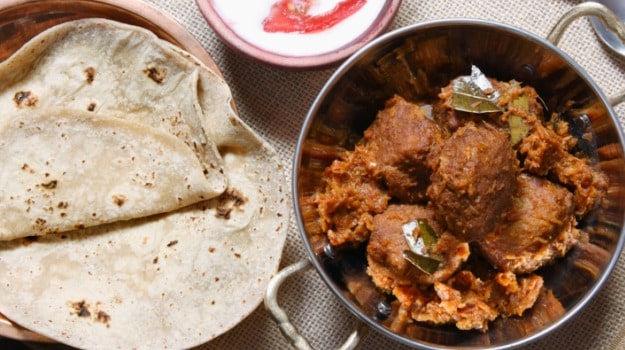The mere mention of 'Shab Deg' triggers nostalgia. It is one of the oldest and most popular meat delicacies from Kashmir. 'Shab' means night and 'Deg' means a large cooking vessel. In local parlance, 'Shab Deg' means a special dish that is cooked through the night to bring it to the right flavour and thickness. In olden times, it was cooked on firewood-lit hearths. Fatima Begum who lives in north Kashmir's Haripora village in Ganderbal district, does not only remember the way the specialty was cooked but also recalls the memories of her youth and childhood associated with the dish. "A heavy, fat rooster of ripe age is feathered carefully so that its skin remains intact. The bird is then cut into pieces depending upon the number of guests or the family members. For large families and more guests, two birds weighing around three kilograms each were chosen in my youth when nuclear families had not come into existence," says Fatima Begum.
"Turnips stored underground for the winter months and called 'ghoh gogji' are washed and cut into small pieces. The bird and the turnips are lightly fried in mustard oil and then mixed with red chillies, cardamom, fennel seeds, garlic, onion scales, turmeric powder and salt," she adds "A little quantity of previously boiled mustard oil is also added with a sufficient quantity of water in the 'Deg' before it is sealed with dough. The dish is cooked over a simmering fire through the long winter night. The experience of the grandmother or the well-trained daughter would alone tell when the dish had achieved the right flavour and thickness so that its lid could be removed," Fatima Begum explains. Haji Muhammad Sidiq who lives in Chanduna village of the same district still remembers the time when his mother would cook 'Shab Deg' - when all village roads remained blocked due to heavy snowfall and villagers has to use oil lamps or kerosene lanterns. "Mother would call the entire family to the kitchen, which had a cooking and eating space. Beaming with confidence, she would carefully remove the lid of the vessel as all of us held our breath to see if her nightlong toil had produced the desired result. The flavour of the dish would fill the entire kitchen and that would prompt us to line up for the feast. It still kindles memories of my youth and childhood," says Sidiq. However, he laments about the fact that today's housewives "have neither the time nor the inclination to take such pains. Plus, where is the traditional hearth and the right heat of the firewood that is needed to make the 'Shab Deg' in addition to the fat, homegrown rooster?" Sidiq wondered. Interestingly, Kashmiri homes used to have a small poultry farm of their own in those days. Mustard oil was locally available as villagers grew oilseeds in plenty. "Dependence on markets, the growing tendency of eating out on weekends or dining out with friends and the habit of grabbing fast food on an impulse have made home-cooked food more of a formality and compulsion than an occasion to get together and identify with each other in a joint family system as it used to be in the past," says Farah Qayoom, who teaches sociology in the University of Kashmir. Whichever way one looks at it, unless delicacies like the 'Shab Deg' are re-introduced to the younger generations feasts like these would become extinct without anyone even batting an eyelid about what has been lost to fast food, cooking gas and microwave ovens.







